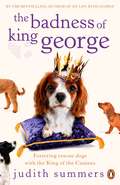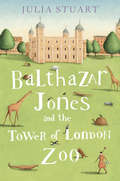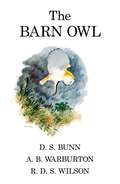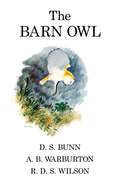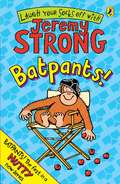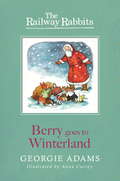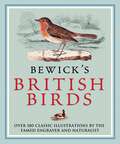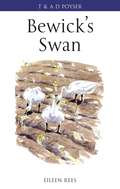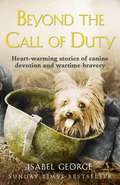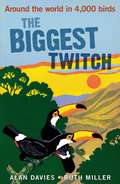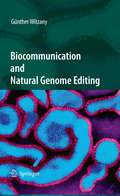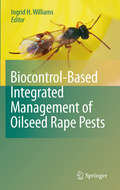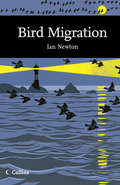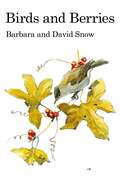- Table View
- List View
The Badness of King George
by Judith SummersJudith Summers' life is about to change dramatically.Her five-year relationship with her on-off boyfriend has finally ended. Her son, Joshua, is off to university, and for the first time since her husband died she's living alone. Well, not entirely alone. She still has George, her King Charles Spaniel. Judith knows she needs a new challenge. But how free can she ever be with George in tow? He is, of course, immensely lovely. But he's also spoilt, lazy, and prone to flouncing around the house like a fluffed-up diva.But then, during a chance encounter , Judith finds out about Many Tears, a dog rescue centre. Before she knows it, she has joined a nationwide network of canine foster carers. Far from having Judith all to himself, George suddenly finds he has to share his owner with lots of other less fortunate dogs. And he's finding adjusting to this new way of life a bit of a challenge...
Balthazar Jones and the Tower of London Zoo
by Julia StuartA poignant, magical and completely original novel that you can’t fail to love, for fans of Joanne Harris.
The Barn Owl (Poyser Monographs #124)
by D. S Bunn A. B Warburton R.D.S WilsonIn the classic monograph mould, this study of Tyto alba is the product of almost 40 years field work by its authors and complementary observations by other dedicated ornithologists in Britain, the USA and Europe. The result is a detailed, balanced account based on intimate knowledge of the Barn Owl in varying habitats in Britain, comparing, as appropriate, this race's behaviour with that of sub-species in other areas of the world. There are major chapters on breeding and general behaviour, feeding, distribution, etc, but voice is rightly given a full treatment. The text is graced by Ian Willis's fine drawings and there are 31 photographs plus a colour frontispiece.
The Barn Owl (Poyser Monographs #124)
by D.S Bunn A.B Warburton R.D.S WilsonIn the classic monograph mould, this study of Tyto alba is the product of almost 40 years field work by its authors and complementary observations by other dedicated ornithologists in Britain, the USA and Europe. The result is a detailed, balanced account based on intimate knowledge of the Barn Owl in varying habitats in Britain, comparing, as appropriate, this race's behaviour with that of sub-species in other areas of the world. There are major chapters on breeding and general behaviour, feeding, distribution, etc, but voice is rightly given a full treatment. The text is graced by Ian Willis's fine drawings and there are 31 photographs plus a colour frontispiece.
The Barn Swallow (Poyser Monographs #52)
by Angela TurnerThe Barn Swallow is a familiar and popular bird throughout theworld. It is one of the most widely distributed bird species, breedingin North America, Europe, Asia and North Africa and wintering in SouthAmerica, southern Africa, southern Asia and even northern Australia.Its habit of nesting close to human habitation has made this elegantbird a part of farmyard and village life and a welcome herald ofspring. This book examines all aspects of the life of this endearing bird, with chapters on its flyingskills and feeding habits, mate choice, breeding strategies, nestsites, eggs and incubation, nestling rearing, productivity andsurvival, migratory behaviour and population dynamics. It also considers changes in populations and behaviour in relation to intensive agriculture and climate change. The Barn Swallow is both engaging and authoritative;birdwatchers will enjoy amazing insights into the life of the species,such as the importance of tail feathers when finding a mate, or thesinister way that some birds kill of the chicks of rivals. Academicscholars will appreciate the book's broad overview of current researchon this species.
Batpants!
by Jeremy StrongBATPANTS the orang-utan is completely, wildly HAIRY. She loves swinging through trees, and apple crumble and roast chicken. But most of all she loves her family, the Loveharts, and all their madcap adventures.Mrs Lovehart is a stuntwoman and so the whole family is off to watch her in action in her latest film. But someone on set has an eeeevil plan and things could turn nasty - will it be Batpants to the rescue?
Beautiful Minds: The Parallel Lives of Great Apes and Dolphins
by Maddalena Bearzi Craig B StanfordApes and dolphins: primates and cetaceans. Could any creatures appear to be more different? Yet both are large-brained intelligent mammals with complex communication and social interaction. In the first book to study apes and dolphins side by side, Maddalena Bearzi and Craig B. Stanford, a dolphin biologist and a primatologist who have spent their careers studying these animals in the wild, combine their insights with compelling results. Beautiful Minds explains how and why apes and dolphins are so distantly related yet so cognitively alike and what this teaches us about another large-brained mammal: Homo sapiens. Noting that apes and dolphins have had no common ancestor in nearly 100 million years, Bearzi and Stanford describe the parallel evolution that gave rise to their intelligence. And they closely observe that intelligence in action, in the territorial grassland and rainforest communities of chimpanzees and other apes, and in groups of dolphins moving freely through open coastal waters. The authors detail their subjects’ ability to develop family bonds, form alliances, and care for their young. They offer an understanding of their culture, politics, social structure, personality, and capacity for emotion. The resulting dual portrait—with striking overlaps in behavior—is key to understanding the nature of “beautiful minds.”
Behavior of Exotic Pets
by Valarie V. TynesBehavior of Exotic Pets is the first book on the subject to be written by behavioral experts, all with a wealth of practical experience. Divided into species-specific chapters, the book explains the normal behavior for each group of animals, including reproduction, parenting, communication and social behavior. The book also addresses animals’ environmental needs based on their behavior to enable owners to provide better husbandry and avoid potential problems. Descriptions of common behavioral problems are included, with practical recommendations for their treatment or management. This text is essential for any veterinary professional who would like to improve their knowledge of exotic animal behavior. It also serves as a valuable reference for animal behaviorists, exotic animal veterinarians, veterinary students, and anyone caring for these animals in captivity. Key features: The first and only book on exotic pet behavior written by behaviorists Covers a wide range of exotic pet species Discusses methods for treating and managing common behavioral problems Offers practical advice on topics such as housing and handling of animals Includes separate chapters on learning, welfare, and behavioral pharmacology
Behavior of Exotic Pets
by Valarie V. TynesBehavior of Exotic Pets is the first book on the subject to be written by behavioral experts, all with a wealth of practical experience. Divided into species-specific chapters, the book explains the normal behavior for each group of animals, including reproduction, parenting, communication and social behavior. The book also addresses animals’ environmental needs based on their behavior to enable owners to provide better husbandry and avoid potential problems. Descriptions of common behavioral problems are included, with practical recommendations for their treatment or management. This text is essential for any veterinary professional who would like to improve their knowledge of exotic animal behavior. It also serves as a valuable reference for animal behaviorists, exotic animal veterinarians, veterinary students, and anyone caring for these animals in captivity. Key features: The first and only book on exotic pet behavior written by behaviorists Covers a wide range of exotic pet species Discusses methods for treating and managing common behavioral problems Offers practical advice on topics such as housing and handling of animals Includes separate chapters on learning, welfare, and behavioral pharmacology
Bemisia: Bionomics And Management Of A Global Pest
by Philip A. Stansly Steven E. NaranjoBemisia tabaci (Gennedius) has distinguished itself from the more than 1,000 whitefly species in the world by its adaptability, persistence and potential to damage a wide range of agricultural and horticultural crops in all six of the world’s inhabited continents. B. tabaci inflicts plant damage through direct feeding, inducement of plant disorders, vectoring of plant viruses and excretion of honeydew. This book collates multiple aspects of the pest ranging from basic to applied science and molecular to landscape levels of investigation. Experts in multiple disciplines provide broad, but detailed summaries and discussion of taxonomy, genetics, anatomy, morphology, physiology, behavior, ecology, symbiotic relationships, virus vector associations and various tactics for integrated management of this pest insect. The book is focused primarily on progress during the last 10-15 years and is directed at workers in the field as well as the informed professional who may not necessarily specialize in whitefly research. The book is unique in providing broad coverage in relatively few chapters by recognized experts that highlight the state-of-the-art in our understanding of this fascinating but troublesome cosmopolitan pest.
Berichte zu Tierarzneimitteln 2008: Gesundheitl. Bewertung von pharmakologisch wirksamen Substanzen; Lebensmittelsicherheit von Rückständen von Tierarzneimitteln; Target Animal Safety for Veterinary Pharmaceutical Products (VICH GL 43); Resistenzsituation bei Zulassung von Tierarzneimitteln (BVL-Reporte #4.8)
by Peter BrandtDie Publikation des deutschen Bundesamtes für Verbraucherschutz und Lebensmittelsicherheit (BVL) berichtet über die gesundheitliche Bewertung pharmakologisch wirksamer Substanzen, die Lebensmittelsicherheit bei Tierarzneimittel-Rückständen, über die internationale Tierarzneimittel-Richtlinie VICH GL 43 sowie die Beurteilung und Überwachung der Resistenzsituation. Weitere Berichte zu Tierarzneimitteln, Pflanzenschutzmitteln, zur Lebensmittelsicherheit, zum wirtschaftlichen Verbraucherschutz und aus den Referenzlaboratorien des BVL sind verfügbar.
Berichte zur Lebensmittelsicherheit 2008: Bericht zur amtlichen Futtermittelkontrolle; Pflanzenschutzmittelrückstände; Nationaler Rückstandskontrollplan für Lebensmittel tierischen Ursprungs; Nationale Berichterstattung an die EU; Inspektionsbericht (BVL-Reporte #4.4)
by Peter Brandt1. Bericht zur amtlichen Futtermittelkontrolle: Die Futtermittelkontrolle stellt u.a. die Unbedenklichkeit tierischer Lebensmittel für die menschliche Gesundheit sicher, schützt Tiergesundheit und Naturhaushalt. 2. Nationaler Rückstandskontrollplan (NRKP) zur EU-weiten Überwachung von Lebensmitteln tierischer Herkunft. 3. Nationale Berichterstattung an die EU. 4. Inspektionsbericht des Lebensmittel- und Veterinäramtes (FVO) zur Einhaltung der EU-Rechtsvorschriften (u.a. Lebensmittel- und Futtermittelsicherheit und –qualität).
Berichte zur Lebensmittelsicherheit 2009: Zoonosen-Monitoring (BVL-Reporte #6.2)
by Peter BrandtZoonosen sind Krankheiten bzw. Infektionen, die zwischen Menschen und Tieren übertragen werden. Menschen können sich über Lebensmittel, die mit Zoonoseerregern kontaminiert sind, infizieren. In dem Bericht werden die Ergebnisse des Zoonosen-Monitorings 2009 veröffentlicht. Für dieses Monitoring werden repräsentative Daten über das Auftreten von Zoonoseerregern in Lebensmitteln, Futtermitteln und lebenden Tieren erfasst und ausgewertet. Weiterhin dient es der Überwachung von Antibiotikaresistenzen bei Zoonoseerregern und anderen Mikroorganismen.
Berichte zur Lebensmittelsicherheit 2009: Bundesweiter Überwachungsplan 2009 (BVL-Reporte #5.3)
by Peter BrandtDer Bericht fasst die Ergebnisse des Bundesweiten Überwachungsplans (BÜp) zusammen. Einmal jährlich wird mit dem BÜp die Durchführung amtlicher Kontrollen zur Einhaltung der lebensmittelrechtlichen, weinrechtlichen und tabakrechtlichen Vorschriften festgelegt. Um Lebensmittel, Kosmetika und Bedarfsgegenstände zu kontrollieren, werden je 1000 Einwohner eine bestimmte Zahl an Produktproben genommen und untersucht. Der gemeinsame Bericht von Bund und Ländern ist eine Veröffentlichung des Bundesamts für Verbraucherschutz und Lebensmittelsicherheit.
Berry Goes to Winterland: Book 2 (Railway Rabbits #2)
by Georgie AdamsSnow has come to the Ripple River Valley! But when Berry and Wisher go exploring, a mix-up with Father Christmas's bag of toys brings them to Fairweather's Farm Park and makes them a part of the Christmas celebrations. Can they find their way home safely?Heartwarming and hilarious, with Anna Currey's charming illustrations, this is a brilliant animal adventure series from a bestselling children's author.
Bewick’s British Birds
by Thomas BewickWith Bewick on my knee, I was then happy...' Jane EyreCharlotte Bronte's heroine was not alone in her enjoyment of Thomas Bewick's British Birds - since its first publication in 1797 it has become one of the best-loved classics of natural history. Bewick's masterful woodcuts are more than scientific records; each beady eye and jaunty pose betrays the artist's love of birds.This edition includes over 180 bird species, from garden favourites such as robins, blackbirds and finches, to predators such as the osprey and the majestic golden eagle. Each entry is illustrated with an engraving, and throughout the book are narrative vignettes typical of Bewick's playful, engaging style.
Bewick's Swan (Poyser Monographs)
by Eileen ReesA fascinating and highly readable monograph, showcasing one of the flagship species of wetland conservation in Britain to superb effect. The arrival of thousands of Bewick's Swans from their Arcticbreeding grounds to lakes and wetlands throughout northern and easternBritain is an unforgettable sight. Popular among both birders and thewider public, these elegant birds are among the best-studied waterfowlin the world. Beginning with the work of the late Sir Peter Scott inthe 1950s, Britain's Bewick's have been the subject of intensivebehavioural study, while their population ecology has provided asimilar focus for research. In Bewick's Swan, Eileen Rees tellsthe story of these birds in rich detail. Rees discusses their biologyin full, with sections on population and distribution, breedingbiology, wintering behaviour, food and feeding ecology, taxonomy andphylogeny, migration, and conservation; much original research isincluded, and there is frequent reference to the Bewick's siblingsubspecies, the Tundra Swan of North America. Personal recollectionsfrom a lifetime of study weave through the narrative, which isilluminated by Dafila Scott's evocative illustrations."The leading monograph of the year, by a long way." British Birds, Feb 2007
Beyond the Call of Duty: Heart-warming Stories Of Canine Devotion And Bravery
by Isabel GeorgeA second collection of incredible and heart-warming canine stories from around the world, from the bestselling author of The Dog That Saved My Life.
The Biggest Twitch: Around the World in 4,000 birds
by Alan Davies Ruth MillerMost people dream of packing in their humdrum city life, selling up and heading off into the unknown for a life of adventure. For Ruth Miller and Alan Davies this dream became a reality, albeit with a twist; they decided to pack in their jobs, sell their house and take on the ultimate birder's challenge - to smash the world record for the numberof species seen in one calendar year.This book is the story of their great expedition, searching for birds from Ecuador to Ethiopia via Argentina, Australia and Arizona. We follow this birding odyssey as they rachet up the species and the stamps in their passports, sharing in amazing birding experiences such as monkey-hunting Harpy Eagles in the Brazilian rain forest, seedsnipes in the Peruvian highlands and lekking bustards in South Africa, all leading to the ultimate question - will they break the magic 4,000? Written in an accessible style, this book will be of great interest to birders, readers of travel literature, and to people who simply enjoy a good adventure!
The Biggest Twitch: Around the World in 4,000 birds
by Alan Davies Ruth MillerMost people dream of packing in their humdrum city life, selling up and heading off into the unknown for a life of adventure. For Ruth Miller and Alan Davies this dream became a reality, albeit with a twist; they decided to pack in their jobs, sell their house and take on the ultimate birder's challenge - to smash the world record for the numberof species seen in one calendar year.This book is the story of their great expedition, searching for birds from Ecuador to Ethiopia via Argentina, Australia and Arizona. We follow this birding odyssey as they rachet up the species and the stamps in their passports, sharing in amazing birding experiences such as monkey-hunting Harpy Eagles in the Brazilian rain forest, seedsnipes in the Peruvian highlands and lekking bustards in South Africa, all leading to the ultimate question - will they break the magic 4,000? Written in an accessible style, this book will be of great interest to birders, readers of travel literature, and to people who simply enjoy a good adventure!
Biocommunication and Natural Genome Editing
by Günther WitzanyI wrote this book for biologists and those who are interested in both biological affairs in general and perspectives which integrate a large number of specialised biological disciplines. The theory of biocommunication presented herein investigates signal transd- tion processes among cells, tissues, organs and organisms in bacteria, animals (corals and bees), fungi and plants in the light of the current available empirical data. Because life is the central focus of the life sciences, this theory will also focus on typical features of life as opposed to inorganic matter. Because this eld of investigation is based on the methodological primacy of a pragmatic action theory, the book may also be of interest to researchers of lingu- tics, communication sciences and sociology (e.g. plant sociology, animal sociology) who would welcome an overview of these highly specialised biological disciplines. Current molecular biology as well as cell biology investigates its scienti c object by using key terms such as genetic code, code without commas, misre- ing of the genetic code, coding, open reading frame, genetic storage medium DNA, genetic information, genetic alphabet, genetic expression, messenger RNA, ce- to-cell communication, immune response, transcription, translation, nucleic acid language, amino acid language, recognition sequences, recognition sites, protein coding sequences, repeat sequences, signalling, signal transduction, signalling codes, signalling pathways, etc.
Biocontrol-Based Integrated Management of Oilseed Rape Pests
by Ingrid H. H. WilliamsOilseed rape is a major arable crop in both Europe and North America. It is attacked by unique complexes of insect pests still largely controlled through the application of chemical insecticides. Crop management systems for the future must combine sustainability with environmental acceptability to satisfy both social and economic demands. This book, in its 17 chapters each led by a world expert, reviews research progress towards developing integrated pest management systems for the crop that enhance conservation biocontrol. This approach is particularly timely because of the development in Europe of insecticide resistance in the pollen beetle, a major pest of the crop. The past decade has seen considerable progress in our knowledge of the parasitoids and predators that contribute to biocontrol, of their distribution patterns, and their behavioural ecology, both within and without the crop. There is potential for natural enemy conservation through modification of within-field crop husbandry practices, as well as, on the landscape scale, through habitat manipulation to encourage vegetational diversity. This book will prove invaluable as a text for researchers, university teachers, graduate scientists, extension workers and growers involved in integrated pest management.
Biological Adhesive Systems: From Nature to Technical and Medical Application
by Janek Byern Ingo GrunwaldJ. Herbert Waite Like many graduate students before and after me I was There are so many species about which nothing is known, mesmerized by a proposition expressed years earlier by and the curse of not knowing is apathy. Krogh (1929) – namely that “for many problems there is Bioadhesion is the adaptation featured in this book, an animal on which it can be most conveniently studied”. and biology has many adhesive practitioners. Indeed, This opinion became known as the August Krogh Prin- every living organism is adhesively assembled in the ciple and remains much discussed to this day, particu- most exquisite way. Clearly, speci? c adhesion needs to larly among comparative physiologists (Krebs, 1975). be distinguished from the opportunistic variety. I think The words “problems” and “animal” are key because of speci? c adhesion as the adhesion between cells in the they highlight the two fundamental and complementary same tissue, whereas opportunistic adhesion might be the foci of biological research: (1) expertise about an animal adhesion between pathogenic microbes and the urinary (zoo-centric), which is mostly observational and (2) a tract, or between a slug and the garden path. If oppor- mechanistic analysis of some problem in the animal’s life nistic bioadhesion is our theme, then there are still many history or physiology (problem-centric), which is usually practitioners but the subset is somewhat more select than a hypothesis-driven investigation. before.
Bird Migration (Collins New Naturalist Library #113)
by Ian NewtonThe phenomenon of bird migration has fascinated people from time immemorial. The arrivals and departures of different species marked the seasons, heralding spring and autumn, and providing a reliable calendar long before anything better became available.
Birds and Berries (Poyser Monographs #127)
by Barbara Snow David SnowThe book's subtitle - A study of an ecological interaction - properly reflects the author's theme but may tend to hide the fact that the relationships between birds and berries can be much more than the simple, mutually advantageous systems ('eat my fruits, spread my seeds' ) they may seem at first to be. Therein lies the core of the book - the less obvious intricacies and impications of plant/bird associations, the coevolution of species in some cases and the adaptation of a species (bird or plant) to further its own advantage. To complicate the scene, too, there are the 'exploiters', the pulp-predators and seed-predators that feed at the plant's expense. In Part I of the book the authors provide accounts by species of the trees and shrubs they observed over many years in their study area of southern England; similarly, Part 2 records the bird species they watched feeding, or attempting to feed, or preventing other birds from feeding, on the fruits. Part 3 ranges widely and is not confined to Britain and Europe. It investigates the strategies and adaptations evolved and employed by plants to ensure their success, and their attempts at defence against the bird 'predators'. It looks at the birds themselves, their foraging techniques and fruit preferences, the limitations of a fruit diet and adaptations to it, the time and energy budgets of fruit-eaters and, finally, the intriguing question of coevolution of plants and birds. This thought-provoking text offers many insights not generally perceived by ornithologist or botanist and is illustrated in masterly fashion by John Busby's lively drawings.
